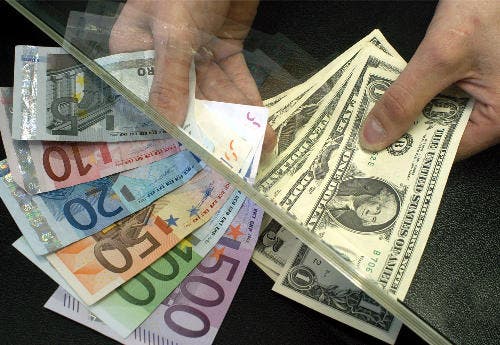A euro is worth a dollar, by first time in 20 years The European currency depreciated until it reached parity with the US dollar on Tuesday. What are the concrete consequences of this depreciation?
Inflation and purchasing power
Close to half of imported products in the euro zone are invoiced in dollars, compared to 40% that are bought in euros, according to the Eurostat statistics office.
This is the case for many raw materials, starting with oil and gas, whose prices have already been on the rise in recent months due to the war in Ukraine.
With the depreciation of the European currency, more euros are needed to buy imported products in dollars.
Read more: Former Budget Director highlights complexity that the Government will face in 2023
“Products imported in dollars lose competitiveness (…) and become more expensive, explained Isabelle Méjean, professor at the Sciences Po Higher School. This contributes to accelerating inflation and threatens the purchasing power of households.
Another vein of this depreciation is that tourism from Europeans, especially to the United States, will be curbed,” said William De Vijlder, economist at BNP Paribas.
But at the same time, tourists from the United States and other destinations gain from the exchange rate and can consume more with the same number of dollars.
Companies
The effect of the fall in the price of the euro varies according to the dependence that companies have on foreign trade and energy.
“Companies that export outside the euro zone benefit from the depreciation of the euro, as their prices become more competitive, but importing companies are hurt,” Philippe Mutricy, research director at public bank Bpifrance.
Firms that are dependent on raw materials and energy and that export little are going to see their costs explode.
The big winner is the manufacturing industry that exports, especially the aeronautics, automobile manufacturers, luxury goods and chemical industries.
Growth and debt
In theory, the depreciation of the euro makes prices more competitive and stimulates exports.
This could cushion the impact on growth of rising commodity prices in the context of the war in Ukraine, especially in more export-oriented economies such as Germany.
Also read: World crude oil consumption will increase by 2.7% in 2023
For the repayment of the debt of European countries, the impact depends.
Higher growth “may make it easier to repay debt,” Méjean explained, provided markets view European debt as safe enough and interest rates remain low.
But for states that issued dollar-denominated bonds, a depreciation of the euro increases the cost of redemption.
central banks
The depreciation of the euro accelerates inflation and this may prompt the European Central Bank (ECB) to raise interest rates more quickly, when the issuer was preparing in July for the first increase in eleven years.
“It can be said that the ECB should not react to rising commodity prices, but its challenge to control inflation becomes more preponderant, as the price of imports rises”, highlighted William De Vijlder.

















